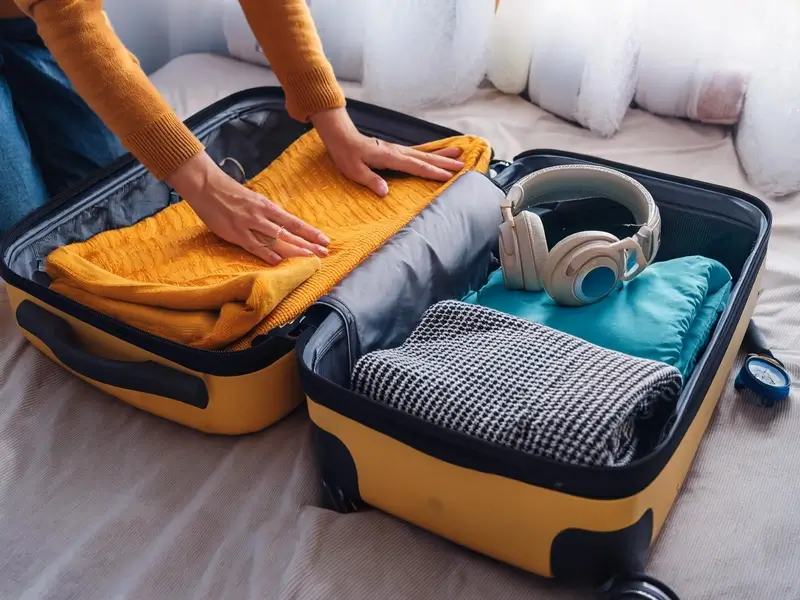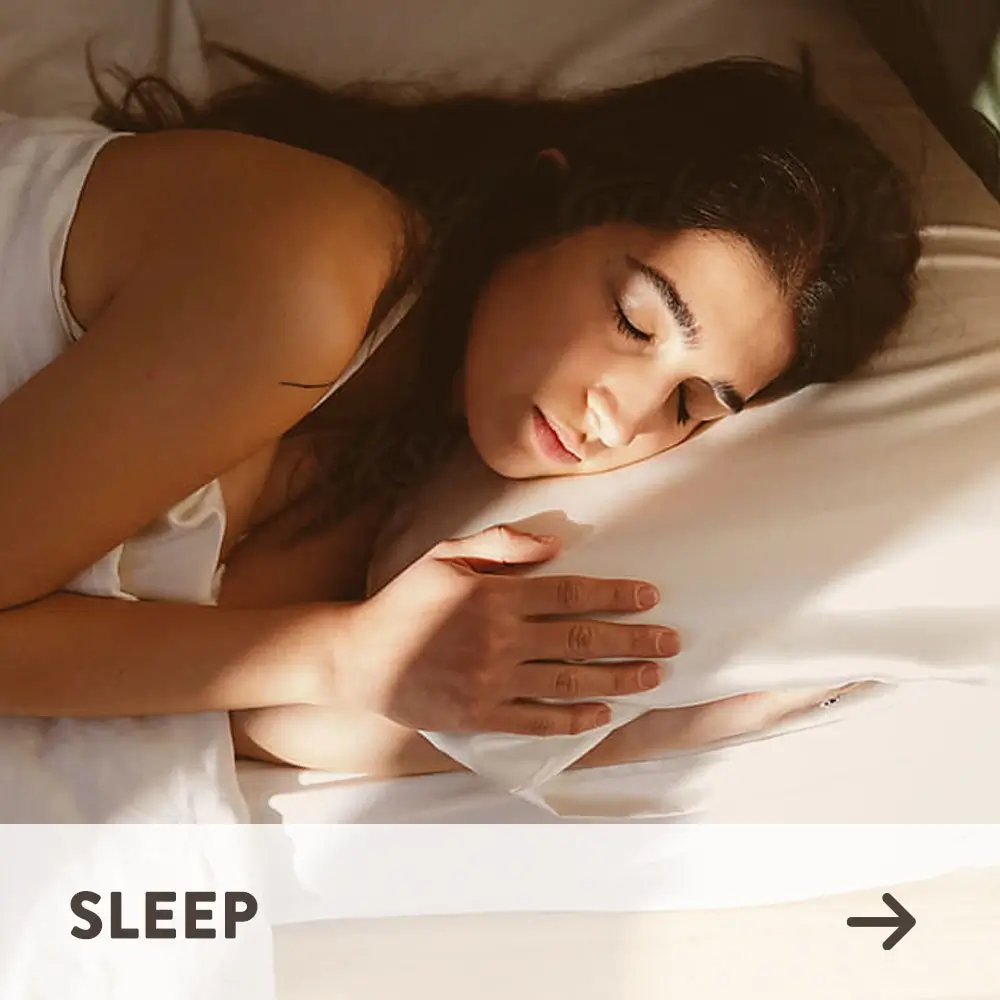Wondering how to sleep on a plane comfortably? It’s not easy with all the noise, bright cabin lights, and limited personal space. Whether it’s an overnight flight or just a few hours, getting decent sleep can feel like a challenge. But with a little planning, it’s totally possible to get some mile-high shut-eye.
Using noise-canceling headphones, a travel pillow, an eye mask, or natural sleep aids can help you block distractions and relax. Simple changes like choosing a window seat or staying hydrated can also make a huge difference. Keep reading for easy tips to get quality rest during your flight.
The Difficulties of Sleeping on a Plane
Sleeping on a plane can feel like a battle. Between the cramped economy seats, bright cabin lights, and constant chatter from fellow passengers, it’s tough to get good sleep. Adding in the limited personal space and all the noise makes staying comfortable nearly impossible.
Long flights often throw off your sleep schedule, especially when crossing multiple time zones. Jet lag and light exposure can mess with your circadian rhythm, making it hard to feel sleepy. It’s no wonder many attempt to sleep while flying to avoid feeling exhausted.
Preparing for Sleep Before Your Flight
Getting ready to sleep on a plane starts before you even board. Pack items like noise-blocking headphones, a neck pillow, an eye mask, a natural sleep aid, and a travel blanket in your carry-on for maximum comfort. Stick to a light meal and avoid caffeine, as it can disrupt your sleep patterns. Staying hydrated and dressing in layers can make your flight more cozy and enjoyable.
Adjusting Your Sleep Schedule
Preparing your sleep schedule ahead of time can make a huge difference, especially for long-haul flights or overnight flights. Start adjusting to your destination’s time zone a few days before your trip. Shift your bedtime earlier or later, depending on your travel plans, to help your circadian rhythm adapt. If you’re crossing multiple time zones, consider sleep aids or herbal tea to relax and fall asleep more easily.
Choosing the Right Seat for Sleeping
Picking the right seat can improve your chances of sleeping well on a plane. A window seat gives you a comfortable position to lean against and helps you avoid interruptions from fellow passengers. If you need extra legroom, an exit row seat or first class offers more space to keep your legs straight or in a slight bend. Avoid aisle seats if you don’t want to be disturbed by flight attendants or other travelers.
What to Pack for Better Sleep on a Plane

Smart packing can greatly improve your chances of sleeping well on a plane. Essentials like a travel pillow, noise-reducing headphones, and an eye mask can make your flight much more comfortable. These essentials are your best bet for quality rest, even in cramped economy seats. Let’s break it down!
Travel Pillows and Blankets
A good travel pillow and blanket are must-haves for long flights. A neck pillow supports your head, preventing it from falling forward while you sleep. Travel blankets, whether lightweight or warm, help you stay cozy in chilly cabins. Many people prefer bringing their own blankets to avoid relying on those provided by most airlines.
Look for compact, easy-to-pack options that fit in your carry-on. These small comforts can help you find a comfortable position and get quality rest during air travel.
Noise-Canceling Headphones and Eye Masks
Noise-blocking headphones and eye masks are life savers for sleeping on a plane. Headphones block all the noise from crying babies, flight attendants, or chatty fellow passengers. Pair them with calming music or white noise to help you relax and feel sleepy.
An eye mask helps with light exposure from cabin lights or window shades. Together, these items can create a peaceful environment for shut-eye, even during long-haul flights or overnight trips.
Natural Sleep Aids for Longer Flights
Long flights can throw off your sleep routine, but natural sleep aids can help you settle in and get quality rest. Using products like CBD, melatonin, or herbal tea can promote relaxation and better sleep. These options are great for staying relaxed, especially during long-haul flights or overnight trips. Here’s some of our top natural sleep options:
- CBD + CBN Gummies. Packed with hemp-derived CBD, CBN, and melatonin, these gummies promote deep, restful sleep. Just take one gummy before your flight for a blissful experience and wake up refreshed.
- D9-THC + CBN Gummies. Combining Delta 9 THC, CBN, and melatonin, these gummies deliver powerful relaxation and a soothing calm. Enjoy the natural fruit flavors before takeoff and get the shut-eye you need to feel energized at your destination.
CBD or THC and melatonin can make it easier to relax and fall asleep on a plane. Melatonin works with your body’s sleep patterns to help you adjust to your destination’s time zone or rest during overnight flights. CBD promotes calm and eases travel-related tension, creating a more comfortable experience for long flights.
Is CBD and THC Allowed On Planes?

Yes, CBD and THC are allowed on planes in most cases, as long as they meet specific requirements. According to TSA guidelines, hemp-derived CBD and THC products containing less than 0.3% THC are federally legal and can be carried in your bag. All products we offer stay within these guidelines. However, it’s always a good idea to check the rules for your destination’s time zone, as some locations may have stricter regulations.
To make traveling with CBD or THC easier, pack it in your carry-on with its original labeling. Keep it under the liquid limit if it’s an oil or tincture. Following these tips ensures a smooth experience during air travel.
Best Sleeping Positions on a Plane
A good sleeping position on a plane lets you relax and fall asleep faster. Whether you’re in an aisle seat, window seat, or economy seat, small adjustments can make a huge difference. Keep your legs straight or in a slight bend to reduce tension, and try to avoid crossing them for long periods. A good sleeping position leads to quality rest, even on long-haul flights.
Upright Sleeping Techniques
Sleeping upright on a plane can feel unnatural, but with the right support, it gets easier. Using simple tools like a neck pillow or travel pillow can help you maintain a comfortable position while reducing strain.
- Use a Neck Pillow. A neck pillow keeps your head steady, preventing it from falling forward while you sleep.
- Lean Against the Window. A window seat gives you something to rest against and keeps you away from passing fellow passengers.
- Adjust Your Seat. Recline your seat slightly to ease pressure on your back while keeping your seat belt fastened.
Using Your Seat and Surroundings for Support
Your seat and surroundings can be great tools for sleeping on a plane. Use a travel blanket or your own blanket to stay warm and cozy. If you’re in a window seat, lean against the side for extra support. In an aisle seat, adjust your seat’s recline and keep your legs straight for better comfort. These tips work in both economy seats and first class, helping you achieve quality rest during air travel.
How to Create a Relaxing Atmosphere Mid-Flight
A calm environment on your flight makes it easier to relax and enjoy quality rest. Simple adjustments, like blocking out distractions or managing your comfort, can have a huge impact. Putting in a bit more effort can turn long flights into peaceful journeys. Here’s how to make it happen:
Blocking Out Noise and Light
Blocking out distractions like noise and light is key to creating a relaxing atmosphere. Noise-blocking headphones are great for tuning out all the noise, while earplugs offer a simpler option. Pair these with an eye mask to block cabin lights and light exposure from windows.
These tools help you feel sleepy faster and improve your sleep patterns, even during long-haul flights or overnight trips. Fewer distractions mean you can settle in and enjoy better sleep.
Controlling Your Body Temperature
Staying warm and cozy on a plane is crucial for quality rest. Layer your clothing to adjust easily if the cabin gets too hot or cold. Compression socks and a travel blanket can also help you stay warm without feeling bulky.
If you tend to feel cold, pack herbal tea in your carry-on and ask flight attendants for hot water. Managing your comfort makes a huge difference, especially on long flights.
Frequently Asked Questions About Sleeping on Planes
Is It Better to Sleep During a Day or Night Flight?
Sleeping on a night flight often feels easier because your body’s natural sleep patterns align with the time. Overnight flights also give you a chance to catch deep sleep and adjust to your destination’s time zone. For day flights, short naps can help if your schedule allows for a few hours of rest.
How Can You Avoid Jet Lag After Sleeping on a Plane?
To avoid jet lag, sync your sleep schedule with your destination’s time zone as soon as possible. Stay hydrated, avoid heavy meals, and get some light exposure after landing. Moving around during the flight and wearing compression socks can also help you feel refreshed and avoid motion sickness upon arrival.
 35% Off Code: Memorial35
35% Off Code: Memorial35

 Sale
Sale 
























